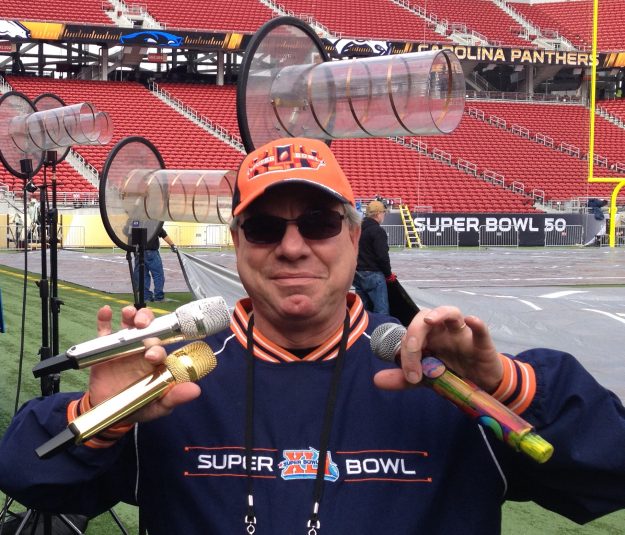RAD’s Jim Stoffo: Read ‘the Fine Print’ on the FCC’s Wireless-Transition Period
Purchasers don’t have to wait the 39 months to occupy the spectrum
Story Highlights
The transition period from the end of the 600 MHz-spectrum auction was clearly spelled out as 39 months. Less clear, as many have discovered since the FCC’s incentive auction closed on April 14, is that the transition period is not solely reserved for wireless-microphone users contemplating their options to move to other parts of the spectrum. Some of the new owners of the auctioned bandwidth were within their rights to light up parts of it within that 39-month period, and some, most notably T-Mobile, have been aggressively doing so. In the process, they’re taking some broadcasters and other wireless-audio users by surprise.
James Stoffo, one of three principals in wireless-intercom-systems manufacturer Radioactive Designs (RAD), points out that the permission to do that is in “the fine print” of the agency’s final documents on the auction but was overlooked by many who would be affected.

James Stoffo and Radioactive Designs handle RF coordination and communications for events like the Super Bowl.
“It’s perfectly legal for them to use their new spectrum at any time, and, once they do so, it’s illegal for anyone else to be in there,” he states. “The trouble is, much of that was in the White Spaces areas, where there’s no active television broadcasting but is exactly where much of the professional wireless-microphone activity was taking place.”
Stoffo adds that, starting earlier this year, he no longer operates at all above 608 MHz for events, such as the recent Microsoft corporate event in Washington, DC. He has essentially fast-forwarded his RF operations, proceeding as though it were already July 2020, when the transition period officially ends. Projects in that period include the Rose Bowl, one of RAD’s regular RF-coordination and RF-comms operations.
Stoffo suggests that a map of the location and timing of planned mobile applications would be a huge help during this period. However, he says, those are strategic decisions that companies like T-Mobile and DirecTV, another purchaser of sizable amounts of spectrum, are not going to share anytime soon.
Wireless-microphone-system manufacturers say that they have cautioned their customers that the 39-month transition period will not be clear sailing. However, Stoffo feels that they could have emphasized that more strongly.
“A lot of people are in denial about this; they still believe that they have a lot of time to make the transition,” he says. “They don’t.”
The intensity of the transition experience will vary, of course, based mostly on location, with the largest broadcast markets feeling the effects sooner and more intensely. But Stoffo says everyone in the wireless-microphone sector needs to take immediate action.
First, he advises, pick a part of the spectrum that works for you and start building your inventory around it. RAD chose to go down in frequency, he notes, into the VHF range (174-216 MHz TV channel 7 through 13), the spectral region that wireless largely operated in more than 25 years ago, bandwidth that was also largely cleared out after the transition to DTV in the early aughts.
It’s bandwidth that several manufacturers have also dug into, including Shure’s ULX-D and QLX-D digital wireless systems and Lectrosonics’ IFB-VHF wireless system. “We see VHF as having a lot of space available once the repack is finished,” he notes. “But wherever you feel comfortable, get there, the sooner the better.” (RAD’s wireless VHF intercoms system is used by the NFL for halftime events.)
Another shortcoming he has noticed is that users have to relearn what’s going on in whatever spectrum they choose. Some bands — 1.9 and 2.4 GHz, for example — do not require coordination, “because they’re uncoordinatable,” he explains. “If you have a product you can’t tune and run into a problem, you’ve got nowhere to go.”
He also recommends staying with easily tunable products from the major manufacturers, which will let users be more agile in the reduced UHF spectrum still available. In addition, he recommends users get FCC Part 74 licenses, which will give them priority in the broader operating areas that wireless users will be working in.
“Users who routinely work with 50 or more frequencies are eligible to apply for and be protected under the FCC’s Low Power Broadcast Auxiliary [LPBA] Part 74 license, which provides immediate access to the White Spaces database and offers the right to reserve necessary frequencies for a production or event,” he points out. “The sooner you do all of this, the better prepared you’ll be for what’s coming and what’s already here.”
